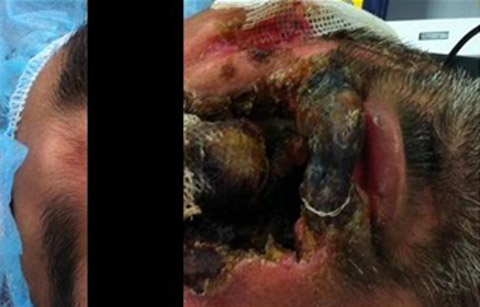Faraz Shafiq*, Muhammad Irfan Ul Haq*, Faisal Shamim*
*Assistant Professor, Department of Anesthesiology, Aga Khan University, Karachi (Pakistan).
Correspondence: Dr. Faraz Shafiq, Assistant Professor, Department Of Anaesthesiology, Aga Khan University, Stadium Road PO Box 3500, Karachi-74800 (Pakistan); E-mail: farazshafiq76@yahoo.com
Key words: Intubation, Intratracheal; Laryngoscopy
Citation: Shafiq F, Haq MIU, Shamim F. The use of video laryngoscope (C-MAC®), a way to minimize the droplet transmission during intubation (Correspondence). Anaesth Pain & Intensive Care 2014;18(4):468
With the advent of C-MAC® video laryngoscope in the modern anesthesia practice, it is known to be useful in teaching skills required for intubation to the novice anesthetists. Similarly the technology has its role in managing the patients with difficult airway. We report its effectiveness in preventing the anesthetists form droplet infections. Recently we came across one patient who had invasive necrotizing lesion due to squamous cell carcinoma (biopsy proven after the surgery) involving his upper lip and nose with a purulent, foul smelling discharge and caused severe disruption of the facial anatomy (Figure 1).
Figure 1: Massive lesion involving the face
The patient needed to be intubated for wound debridement and biopsy. The functional assessment of the airway was done and it seemed to be slightly difficult one. There was a history of a recent uneventful general anesthesia. The real problem at that time was the foul smelling discharge from the wound which was unbearable even through the face mask. After the routine induction the bag ventilation was assessed. He was paralyzed and intubated successfully by using video laryngoscope. We think that the technique is not only useful to save the discomfort associated with foul smell of the wound but it may also prevent the intubating anesthetists from the spread of droplet infections like swine flu, viral hemorrhagic fever etc.


